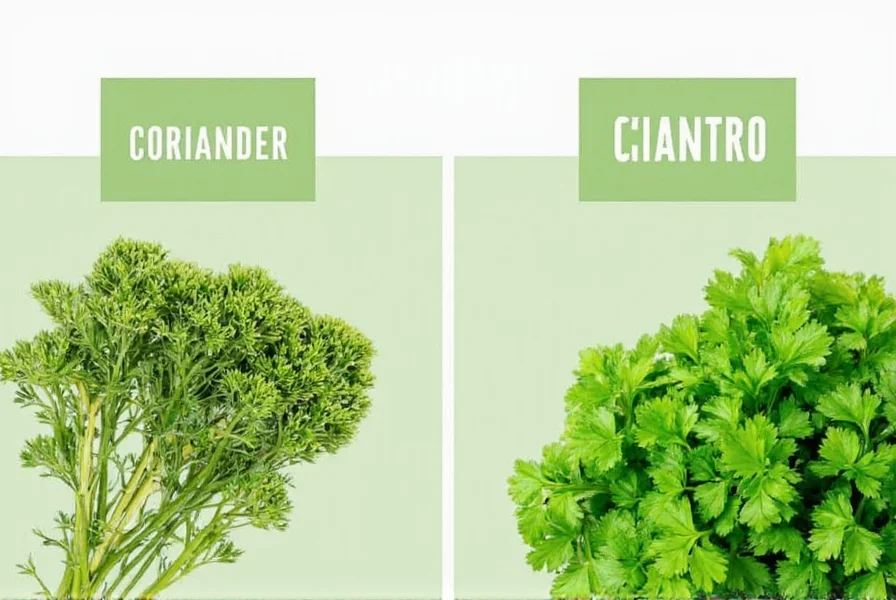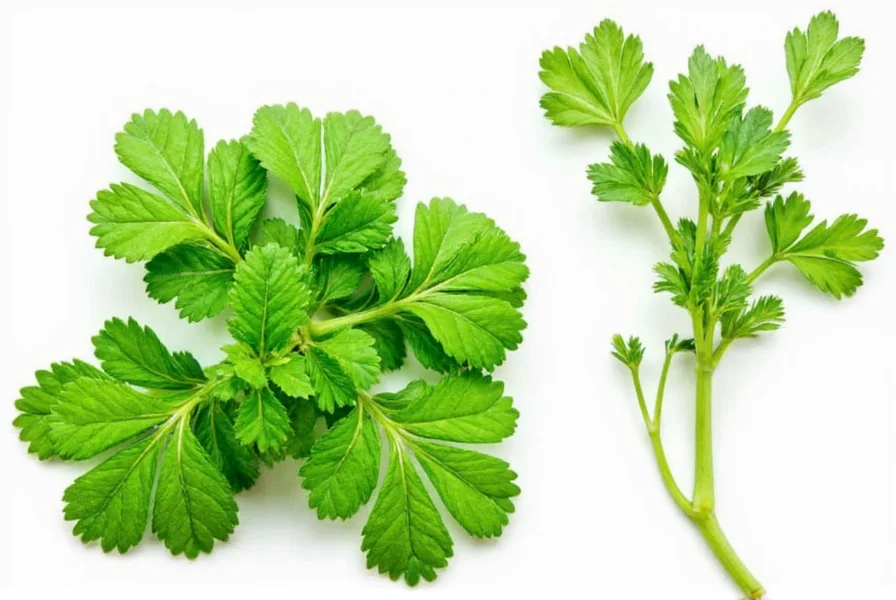Understanding the distinction between coriander versus cilantro eliminates confusion in recipes and grocery shopping. This common point of culinary confusion stems from regional language differences rather than botanical distinctions. Let's explore the complete picture of this naming phenomenon that affects home cooks and professional chefs worldwide.
The Botanical Reality: One Plant, Two Names
Coriandrum sativum, an annual herb in the Apiaceae family, produces both the fresh green leaves known as cilantro in North America and the dried seeds called coriander seeds everywhere. The entire plant is technically coriander, but regional naming conventions have created this persistent misunderstanding.
The fresh leaves and stems go by "cilantro" in the United States, Canada, and Latin American countries, while most other English-speaking regions (UK, Australia, India, South Africa) call the same parts "coriander" or "fresh coriander." Meanwhile, the dried seeds are consistently called "coriander seeds" globally, though some American recipes simply say "coriander" when referring to the ground spice.
Regional Terminology Breakdown
| Region | Term for Fresh Leaves/Stems | Term for Dried Seeds |
|---|---|---|
| United States & Canada | Cilantro | Coriander (or coriander seeds) |
| United Kingdom & Ireland | Coriander (fresh coriander) | Coriander seeds |
| Australia & New Zealand | Coriander | Coriander seeds |
| India & South Asia | Dhaniya (fresh) | Dhaniya (seeds) |
| Mexico & Latin America | Cilantro | Comino (often confused with cumin) |
Why the Naming Confusion Exists
The linguistic divide originates from Spanish influence. "Cilantro" comes from the Spanish word for the plant, which itself derives from the Greek "koris" (bug), likely referencing the plant's distinctive scent. When Spanish explorers brought the plant to the Americas, they used "cilantro" for the fresh leaves.
British English maintained the original Latin-derived term "coriander" for both plant parts, a convention adopted by most former British colonies. This explains why American recipes might call for "cilantro" while British recipes specify "fresh coriander"—they're referring to identical ingredients.
Practical Implications for Cooking
When following international recipes, understanding this terminology difference prevents ingredient mistakes. If a British recipe calls for "coriander" in a fresh salsa, it means the leafy green part (what Americans call cilantro). If an American recipe lists "coriander" as a spice, it refers to the ground seeds.
Chef Maria Rodriguez, who teaches international cooking classes, notes: "The biggest mistake I see is when American cooks substitute dried coriander seeds for fresh cilantro in guacamole, or vice versa. They have completely different flavor profiles and uses."
Flavor Profile Comparison
While they come from the same plant, the leaves and seeds have dramatically different flavor characteristics:
- Cilantro (fresh leaves): Bright, citrusy, slightly peppery with a distinctive aroma that some describe as soapy (due to a genetic sensitivity)
- Coriander seeds: Warm, nutty, lemony with subtle floral notes; becomes more complex when toasted
These flavor differences explain why you cannot substitute one for the other in recipes—they serve completely different culinary functions. The fresh leaves work as a garnish or key ingredient in salsas and chutneys, while the seeds function as a spice in curries, baked goods, and pickling blends.
Global Culinary Usage Patterns
Understanding coriander versus cilantro terminology becomes crucial when exploring international cuisines:
- Mexican cuisine consistently uses "cilantro" for the fresh herb in salsas, guacamole, and as a garnish
- Indian recipes refer to both fresh and dried forms as "dhaniya" but distinguish usage contextually
- Middle Eastern dishes often call for "coriander" when referring to the fresh herb in salads and dips
- British cookbooks use "coriander" for both forms, relying on context to indicate which part is needed
Common Misconceptions Clarified
Several myths persist about coriander and cilantro:
- Myth: They're different plants
Fact: Same botanical species (Coriandrum sativum) - Myth: Cilantro is stronger tasting than coriander
Fact: They have completely different flavor profiles—you can't compare strength as they're used differently - Myth: You can substitute dried coriander for fresh cilantro
Fact: They're not interchangeable; use parsley as a cilantro substitute instead
Shopping Guidance for Confused Cooks
When navigating grocery stores:
- In American supermarkets, look for "cilantro" in the fresh herb section and "coriander" in the spice aisle
- International markets often label the fresh herb as "coriander" regardless of location
- When ordering seeds online, search for "coriander seeds" to avoid confusion
- Farmer's markets may use either term depending on the vendor's background

Historical Context of the Naming Divide
The terminology split intensified during the 20th century as American English diverged from British English in culinary terminology. Food historians trace the American adoption of "cilantro" to increased Mexican immigration and the popularity of Mexican cuisine in the United States during the mid-1900s.
Meanwhile, British culinary traditions maintained the original term "coriander" for all parts of the plant, a convention that spread through the Commonwealth. This historical divergence created the current naming confusion that continues to puzzle home cooks examining international recipes.
Professional Chef Recommendations
Top chefs emphasize understanding this distinction for authentic cooking:
"When I'm developing recipes for international publication, I always specify 'fresh coriander (cilantro)' or 'coriander seeds' to prevent confusion. The last thing I want is someone putting ground coriander in their guacamole instead of the fresh leaves!" — Chef Michael Chen, culinary instructor
Professional kitchens often adopt standardized terminology regardless of location to avoid preparation errors. Many contemporary cookbooks now include both terms in parentheses when first mentioning the ingredient.
Conclusion: Embracing the Terminology Difference
The coriander versus cilantro distinction represents a fascinating case of linguistic divergence rather than botanical difference. By understanding this regional terminology variation, cooks can confidently navigate international recipes and grocery shopping experiences. Whether you call it coriander or cilantro, recognizing that you're working with parts of the same versatile plant—Coriandrum sativum—eliminates unnecessary confusion in the kitchen.











 浙公网安备
33010002000092号
浙公网安备
33010002000092号 浙B2-20120091-4
浙B2-20120091-4